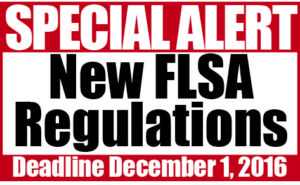A recent client engagement underscored the need and importance of using an online tool in reviewing a sales incentive plan and making recommendations for improvement.
 The company is a middle market company located in the Midwest. It offered the B2B markets a high quality and premium priced product line. In recent years, there were multiple changes in the sales leadership and several changes to the design of the sales incentive plans.
The company is a middle market company located in the Midwest. It offered the B2B markets a high quality and premium priced product line. In recent years, there were multiple changes in the sales leadership and several changes to the design of the sales incentive plans.
The primary issue was that while sales revenues had increased 7.5 percent in 2015, the sales incentive payout was more than 200 percent of the previous year. The company needed to implement a sales incentive program for the long term that also fit their immediate needs.
The Approach
The six-step approach we used is summarized below. Note that in Step 1, we included the use of an online salesforce effectiveness survey to solicit the opinions of both sales associates and perceptions of the senior leadership team of the company.
Step 1: Plan and gather data; use salesforce survey
Step 2: Conduct market benchmarking analysis
Step 3: Interview leadership team
Step 4: Interview selected sales team associates
Step 5: Develop recommendations and refine and specify plan details
Step 6: Present recommendations and deliver final report
The survey itself offered many fundamental benefits:
- Topical. Contains questions on important topics including: product quality, marketing efforts, quota setting, sales associate training, sales strategy clarity, incentive earnings potential, and time allocation (now and should be).
- Inclusive. Able to get input from all the sales associates, rather than from selected interviews.
- Comparative. Time allocation results compared to overall benchmarks.
- Quick. It could be completed within 10 minutes.
- Anonymous. Participant asked to check off whether he or she was a sales associate or executive.
Survey Results and Their Role in The Recommendation
A few important findings follow:
- A reality gap exists. Except for product quality and sales associate proficiency, there was little agreement between the ratings by the sales associates compared to those by the leadership team. A gap is not unusual. This gap, however, was wider than we have seen in many uses of this tool.
- Sales Associates view their incentive plan as moderately fair, motivating, and competitive to the external market.
- The allocation of time for travel was a major differentiator. Sales associates said they should travel 24 percent of the time, while the executives felt that only 5 percent should be needed.
The online salesforce effectiveness tool’s results were helpful in three ways: First, the role of the company’s key sales position was not reflected properly in the incentive plan design resulting in the pay mix having too much leverage vs. the position’s role. Second, account retention was seriously underweighted vs. new account acquisition. Third, the company’s limited marketing efforts were insufficient drivers in the selling process.
The next time when conducting a sales incentive plan review or redesign consider using a salesforce effectiveness survey. You will be surprised at your important discoveries or just pleased with confirming data. Both outcomes will increase design effectiveness and improve your sales incentive plan.
Contact Us
We welcome your feedback on our Salesforce Alert eNewsletters and would like to talk with you further regarding your salesforce experience and input. Please feel free to contact Tim Weizer at (312) 479-6411 or tim@salescne.com or Neil Lappley at (847) 864-8979 or nlappley@lappley.com.


 The company is a middle market company located in the Midwest. It offered the B2B markets a high quality and premium priced product line. In recent years, there were multiple changes in the sales leadership and several changes to the design of the sales incentive plans.
The company is a middle market company located in the Midwest. It offered the B2B markets a high quality and premium priced product line. In recent years, there were multiple changes in the sales leadership and several changes to the design of the sales incentive plans.